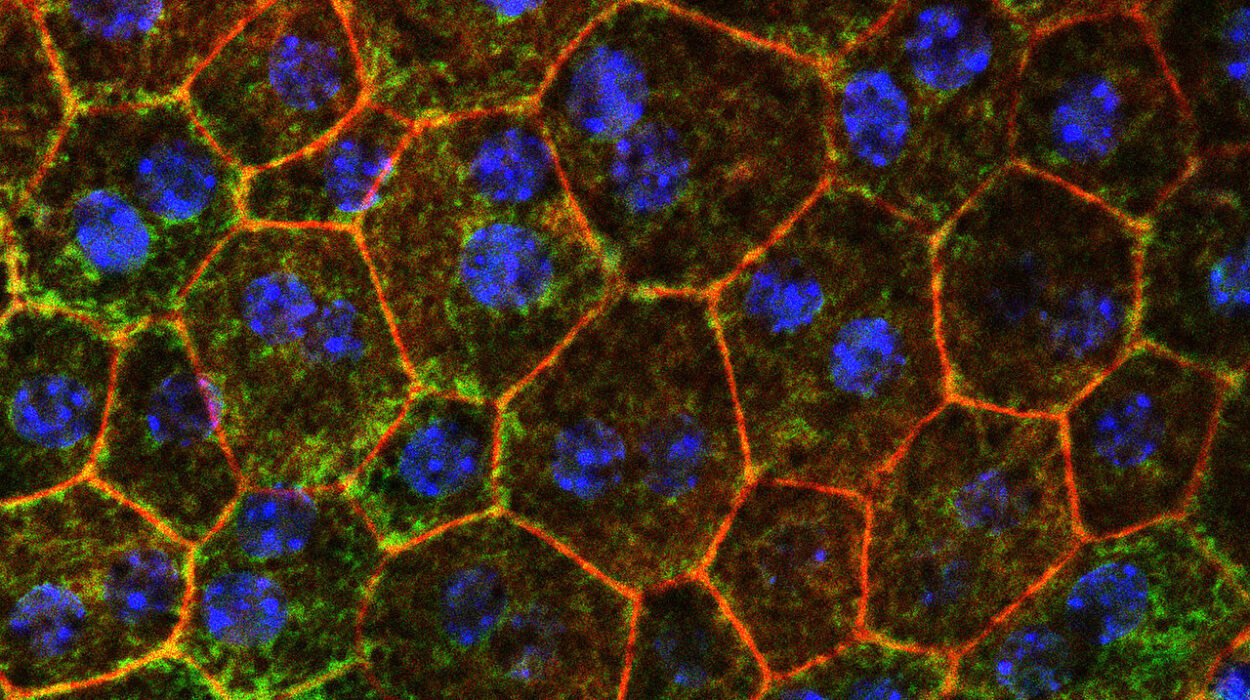In the grand theater of human health, not all stages are lit the same. A child with pneumonia in Stockholm may receive life-saving antibiotics within hours; a child with the same infection in rural Malawi might never see a clinic. The disease is identical—but its odds of killing are dramatically different. Why is this so?
The stark disparities in disease outcomes between high-income and low-income nations form one of the most persistent and tragic inequalities in global health. Diseases that are preventable, curable, or relatively mild in wealthy countries can become life-threatening in places where poverty, poor infrastructure, and systemic neglect are part of daily life. But this isn’t merely about income. It’s about the complex interplay of history, environment, policy, biology, and culture.
To understand why diseases are more deadly in developing nations, we must go beyond pathogens and peer into the broader ecology of human suffering. We must examine how colonial histories shaped health systems, how malnutrition weakens immune defenses, how war and migration disrupt vaccination campaigns, and how global inequities in research, pharmaceuticals, and policy leave millions more vulnerable to what are often curable conditions.
This is the story of how disease becomes destiny—and how that destiny can be rewritten.
The Body in Context: Health Beyond Biology
In medical textbooks, diseases often appear as universal truths. Tuberculosis is caused by Mycobacterium tuberculosis. Malaria is caused by Plasmodium parasites. HIV leads to AIDS. But in real-world settings, these textbook definitions are only the beginning of the story.
The same infectious agent behaves differently in different contexts. A virus or bacterium is not acting alone—it is playing against the background of a person’s immune system, nutrition, housing, access to care, and exposure to other diseases. It is influenced by climate, politics, stigma, and geography.
For instance, diarrhea—a symptom rather than a single disease—is a common nuisance in developed countries, often lasting a day or two and requiring little more than hydration. In low-income nations, however, diarrhea can be a death sentence for children. Not because the pathogens are more virulent, but because children are already malnourished, access to clean water is scarce, oral rehydration therapy may be unavailable, and hospitals may be distant or prohibitively expensive. The death is not from the disease alone—but from the context in which it occurs.
This ecological view of disease is crucial. It forces us to stop seeing illnesses as isolated invaders and instead understand them as part of a complex, interconnected system of vulnerability. A system that is, in many parts of the world, tragically skewed against the poor.
Malnutrition: The Immune System’s Silent Saboteur
Few forces shape disease outcomes more powerfully than nutrition. Malnutrition doesn’t simply cause weakness—it dismantles the immune system from the inside out. Proteins needed for producing antibodies become scarce. Micronutrients like vitamin A, zinc, and iron—critical for immune cell function—drop to dangerously low levels. The gut lining thins, increasing susceptibility to intestinal infections, while chronic inflammation simmers in the background, altering the body’s ability to fight off invaders.
In such a state, even relatively benign infections can spiral into life-threatening crises. A bout of measles, which might be shrugged off by a well-fed child in a wealthy country, can prove fatal in an undernourished one. The immune system simply can’t mount a defense.
This is a vicious cycle. Illness reduces appetite and nutrient absorption, deepening malnutrition, which in turn increases susceptibility to further illness. In many developing regions, especially in sub-Saharan Africa and South Asia, this cycle starts in infancy—sometimes even before birth—and continues through early childhood. By the time children reach school age, their bodies have been primed for vulnerability.
It is no coincidence that many of the world’s deadliest diseases in developing countries—diarrheal diseases, pneumonia, malaria—are especially lethal to malnourished children. Malnutrition is the silent co-infection that makes everything worse.
Infrastructural Poverty: When Systems Fail the Sick
When we think of healthcare, we often picture hospitals, doctors, and medications. But these are only the visible parts of a much larger system. The foundations of public health—clean water, sanitation, reliable transportation, electricity, and communication—are often invisible until they fail.
In many low-income nations, these failures are chronic. Roads may be impassable, especially during rainy seasons, preventing rural residents from reaching clinics. Clinics may lack refrigeration for vaccines or medicines. Laboratories may be unable to perform basic diagnostic tests. Electricity may be intermittent, disrupting everything from surgical operations to neonatal incubators. Clean water may be scarce, increasing the risk of waterborne diseases and making hand hygiene—a simple but powerful infection control tool—nearly impossible.
These systemic failures amplify the lethality of diseases. A child bitten by a rabid dog might survive in a country where post-exposure prophylaxis is available. In regions where the nearest clinic is days away, and that clinic lacks refrigeration or trained personnel, the same child might die a horrible death. The pathogen is not stronger—but the system is weaker.
Infrastructure also determines whether public health campaigns succeed. Mosquito nets only help if they’re available and used properly. Vaccines only protect if cold chains are maintained. Antibiotics only cure if there’s a pharmacy to distribute them and a clinician to prescribe the right one.
In this way, poverty becomes structural—etched into roads, pipes, and power lines, making it harder to escape and easier to die from preventable causes.
Colonial Legacies and the Architecture of Inequality
The roots of global health disparities stretch back centuries. During the colonial era, European powers carved up Africa, Asia, and the Americas, extracting wealth and labor while doing little to develop inclusive health systems. The infrastructure that did emerge often served the colonizers or urban elites, leaving rural populations neglected.
When independence movements swept the globe in the 20th century, many new nations inherited fragmented, underfunded health systems ill-equipped to serve their populations. The Cold War era brought new challenges, as health aid became entangled in geopolitical strategies rather than genuine development.
Moreover, colonialism disrupted traditional systems of healing, knowledge transmission, and community care, replacing them with distant bureaucracies and a model of medicine often ill-suited to local realities. In many cases, foreign aid programs continued this trend, prioritizing vertical interventions—like mass drug administration for one disease—over long-term investment in primary care or health education.
These historical forces are not mere background. They shape the modern landscape of disease. A mosquito doesn’t care about colonial borders, but the absence of coordinated regional health policy—often a relic of colonial fragmentation—can determine whether a malaria outbreak is contained or explodes.
The Unequal Geography of Research and Medicine
One of the cruelest ironies of global health is that diseases most common in developing nations are often the least studied. Pharmaceutical companies, driven by profit, invest heavily in medications for chronic diseases of aging—like diabetes, hypertension, and cancer—which primarily affect wealthier populations. Neglected tropical diseases, which afflict hundreds of millions in poor countries, receive a fraction of the research funding.
This “10/90 gap”—where less than 10% of global health research addresses the conditions responsible for 90% of the global disease burden—means that millions suffer from diseases for which there are no effective treatments, no vaccines, and little hope of innovation.
Even when treatments exist, cost and logistics pose barriers. HIV antiretroviral therapy revolutionized care in the West by the mid-1990s. But in Africa, millions died before generic drugs became widely available in the 2000s. Cancer drugs remain priced out of reach for most people in low-income nations. And even basic antibiotics are increasingly failing in places with rampant resistance due to poor regulation and overuse.
Intellectual property regimes, global trade agreements, and pharmaceutical monopolies all play a role in this injustice. The science exists to save lives—but the economics often doesn’t allow it.
Cultural Barriers, Stigma, and Trust
While biology and infrastructure matter enormously, the social fabric in which health is woven cannot be ignored. In some regions, stigma surrounding certain diseases—like HIV, leprosy, or mental illness—can prevent people from seeking care. In others, traditional beliefs may lead individuals to seek healers or spiritual remedies before approaching formal medicine.
This is not to disparage traditional medicine, which often plays a crucial role in community health and can complement biomedical care. But when health systems are distrusted—due to corruption, neglect, or colonial legacies—people may avoid clinics even when lifesaving treatment is available.
Vaccine hesitancy, for example, is not limited to wealthy countries. In parts of northern Nigeria, resistance to polio vaccines in the early 2000s was fueled by political suspicion, misinformation, and lack of community engagement. The result was a resurgence of polio, even as it had been nearly eradicated elsewhere.
Rebuilding trust in health systems requires more than drugs and clinics—it demands respectful partnership, culturally sensitive communication, and genuine investment in local leadership.
Climate Change, Conflict, and the New Epidemiology
Emerging global forces are reshaping disease patterns in ways that disproportionately harm developing nations. Climate change is expanding the range of vector-borne diseases like dengue and malaria, increasing food insecurity, and displacing communities. Droughts lead to crop failures; floods contaminate drinking water. The result is a cascade of health consequences—malnutrition, diarrhea, respiratory illness—that fall hardest on the poor.
Armed conflict compounds these challenges. In war zones, health infrastructure is often targeted or abandoned. Vaccination campaigns stall. Clean water disappears. Diseases like cholera, long eradicated in wealthier nations, erupt in refugee camps and besieged cities. The Syrian civil war led to polio’s re-emergence in the region; the conflict in Yemen unleashed the world’s worst cholera epidemic in recent history.
These modern crises don’t just expose existing weaknesses—they multiply them. And they often erase decades of public health progress in a matter of months.
Bright Spots: Successes and Solutions
Despite the overwhelming challenges, the story is not entirely bleak. In fact, some of the most remarkable public health successes have occurred in resource-limited settings.
Countries like Rwanda and Ethiopia have dramatically expanded access to primary care through community health workers. Bangladesh has reduced maternal and child mortality through investments in family planning and rural clinics. India has eradicated polio. Sri Lanka has achieved impressive health outcomes despite modest economic resources, thanks to a strong public health tradition.
International efforts like GAVI (the Vaccine Alliance), the Global Fund to Fight AIDS, Tuberculosis and Malaria, and the WHO’s Expanded Program on Immunization have saved millions of lives through targeted investments and partnerships.
Technology, too, is changing the game. Mobile phones enable real-time disease surveillance. Drones deliver vaccines to remote regions. Telemedicine bridges gaps in medical expertise.
But these successes are fragile. They depend on sustained funding, political will, and community engagement. The road to health equity is long—and easily reversed.
A Matter of Justice, Not Charity
Ultimately, the deadly nature of disease in developing nations is not just a medical issue—it is a moral one. It reflects a global system in which the value of a life still seems to depend on geography and wealth. Where curable diseases remain lethal, not because we lack the tools, but because we have failed to distribute them fairly.
Fixing this requires more than aid. It demands solidarity. It demands reforming trade and patent laws, investing in health infrastructure, supporting education and nutrition, and placing local voices at the center of health decision-making.
It also requires us, in wealthier nations, to abandon the illusion of isolation. In an interconnected world, viruses leap borders with ease. So does antibiotic resistance. Global health is not a zero-sum game—it is a shared human endeavor.
Rewriting the Future
The question is not whether we can prevent disease from being more deadly in developing nations. We can. The question is whether we will.
With the right policies, funding, and compassion, a different world is possible. One where a child born in Nairobi has the same chance of surviving pneumonia as one born in New York. One where no disease is neglected because of the poverty of its victims. One where health is a right, not a privilege.
In that world, disease will still exist. But it will no longer be destiny.






